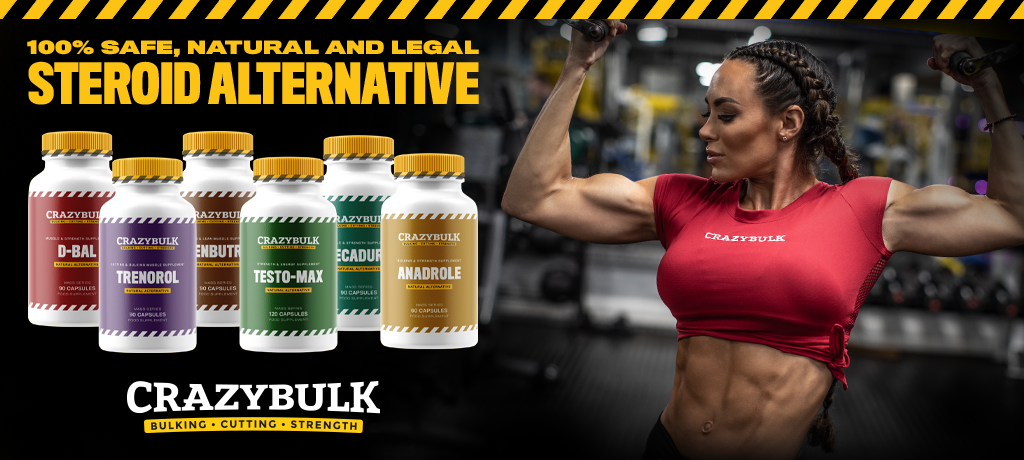Typically, a newborn weighs around 7.25 pounds and measures about 19.5 inches in length. These metrics, under the influence of the human growth hormone (often referred to as somatotropin or somatropin), are subject to change as individuals grow and develop. In this discussion, we will delve into the intricacies of HGH, unraveling its significance and how it shapes human growth.
Tracing the Origins of HGH
The inception of the growth hormone is credited to Evans and Long, who discovered it back in the 1920s. Fast forward to 1944, and scientists managed to extract a crystalline substance from the pituitary of animals. Human somatotropin, inherently present in our bodies, was isolated for the first time in 1956. It wasn’t until 1958 that it was clinically administered to a child who had a malfunction in the hormone’s secretion. The outcome of this HGH treatment was encouraging, which paved the way for its broader medical application.
Demystifying HGH and Recognizing Its Deficiency
So, what exactly is HGH? Known as Growth Hormone (GH), this pleiotropic protein consists of 191 amino acids. It’s primarily secreted by the anterior pituitary gland. Throughout one’s lifespan, the brain regulates the production of this essential agent, with the secretion peaking during teenage years, when growth spurts are most evident.
Endogenous GH is instrumental in a myriad of physiological processes. It aids in gametogenesis, stimulates steroidogenesis, supports testicular and ovarian function, ensures the body grows in length, and regulates various non-endothelial-dependent activities, among others. As documented by Spanish researchers Jesus Devesa, Cristina Almenglo, and Pablo Devesa in 2016, these profound effects result from the activation of proteins involved in cellular signaling.
Symptoms of GH deficiency in adults can manifest as:
- Pronounced abdominal obesity
- Early onset atherosclerosis
- Elevated cholesterol levels
- Reduced work capacity
- Sexual function anomalies
- Osteoporosis
Children experiencing a shortage of somatotropin often display stunted physical development. Although this condition is relatively rare, it can result in feelings of isolation and discomfort among their peers, emphasizing the importance of timely interventions and effective treatments.
Factors leading to diminished hormone levels can be multifaceted, ranging from a complete lack of secretion to suboptimal production. Occasionally, other pituitary gland malfunctions may coincide, leading to significant growth delays, thyroid anomalies, delayed sexual maturity, and adrenal inadequacies.
Potential triggers of such imbalances include:
- Maternal health complications during pregnancy
- Inherited genetic disorders
- Birth-related injuries
- Severe cranial trauma
- Brain neoplasms
Furthermore, radiation therapy, a common treatment for various cancers, can inadvertently lead to a hormonal deficit. This deficiency may stem from impaired brain activity that would typically signal the production of essential GH.
Artificial HGH: Characteristics and Available Brands
When integrated into a tailored regimen, the artificial human growth hormone (HGH) exerts its influence on the body’s internal secretion glands. Once stimulated, these glands promote the elongation of bones, muscle development, and an accelerated rate of fat metabolism. Somatropin, a form of HGH, plays a crucial role in preserving collagen within tissues and halting the progression of enzymes that can adversely affect amino acids.
Adequate levels of HGH bolster the growth, both in quantity and size, of cells in various organs like the adrenal glands, liver, gonads, and thyroid gland. One of its primary effects is to enhance the breakdown of fats, leading to an increased concentration of fatty acids. This subsequently reduces insulin’s capability to transport glucose.
Wondering where to source this hormone? The digital marketplace, specifically online pharmacies, is the go-to. Such platforms often feature a spectrum of products, ranging from anabolics like Andriol and Halodrol, to natural steroid alternatives, and even variants of Chinese steroids.
Brands that have made a mark in the HGH market include:
- Norditropin
- Humatrope
- Saizen
- Omnitrope
- Genotropin
- Zomacton
- Zorbtive
- Geref Diagnostic (sermorelin)
- Egrifta (tesamorelin)
- Eutropin and Saizen (renowned brands in India)
The Promising Outcomes of HGH Usage
To fully harness the potential of HGH, it’s paramount to understand its properties before starting a course. Administered optimally, the benefits of HGH encompass:
- Bolstering the body’s natural healing abilities and warding off detrimental factors.
- Rejuvenating effects.
- Fortifying bone density.
- Reducing fat layers, contributing to weight loss.
- Augmentation of muscle mass.
- Boosting the body’s defense mechanisms.
- Enhancing cognitive functions and brain activity.
- Improving intellectual capabilities.
- Efficiently breaking down excessive lipid molecules.
- Amplified libido.
In-depth Look at HGH Injections
Artificial somatotropin has carved a niche for itself in the bodybuilding arena. Athletes and fitness enthusiasts utilize it to accentuate muscle tone by reducing fatty layers.
Contrary to some medical opinions suggesting HGH might elevate sugar levels, rendering it unsuitable for diabetics, recent studies have debunked this notion. Diabetics can safely use HGH, but they must vigilantly monitor their glucose levels throughout the treatment.
The medication’s characteristic of opposing insulin is noteworthy. This leads to a unique imbalance between the body’s naturally secreted hormones and those introduced externally.
Therefore, during HGH therapy, the insulin dosage needs fine-tuning. Especially during the initial fortnight, care should be taken, with many experts suggesting a gradual increase in insulin dosage (typically by one to three units).
For those with hypertension, caution is advised, as HGH can influence blood pressure. It also reduces the intake of sodium chloride (NaCl). However, to circumvent any potential adverse effects, always consult with a medical professional before embarking on an HGH regimen.
It’s worth noting that HGH-containing medications aren’t quick fixes. The transformative effects manifest over time, ensuring a lasting impact on the body.
Guidelines for Correct HGH Injection
For those considering the use of the human growth hormone (HGH), it’s crucial to understand the correct method of administration. Below are manufacturer-recommended steps to ensure the proper injection:
- Selecting the Injection Site: The abdominal region, roughly 3 inches away from the navel, is commonly recommended as it’s typically less painful. The aim is to administer the injection between the skin and the underlying muscle.
- Rotate Your Injection Points: Constant use of the same injection spot can lead to lipodystrophy, a condition where fat under the skin starts breaking down. Therefore, regularly change the injection sites.
- Injection Technique: Hold the syringe at a 45° angle during administration. Inject the liquid slowly, maintaining that angle for 5-10 seconds post-injection to minimize leakage.
- Hygiene: Always clean your hands with an alcohol-based sanitizer before the procedure to minimize infection risk. Sterilize the ampoule neck and injection site with an alcohol swab or sterile cotton. Ensure the syringe is air bubble-free before injection.
HGH Dosage and Potential Side Effects
For optimal results, it’s suggested to start with a conservative HGH dose and then incrementally increase it. The initial recommended dose is 4 IU per injection. After a month, an increase of 0.5 units is permissible, eventually leading to two separate 2.5-unit injections daily. However, if side effects like joint pain or bloating are noted, it’s advisable to decrease the dosage.
It’s essential to remain consistent with doses unless confronted with severe adverse reactions. Despite its anabolic nature, HGH can lead to severe side effects, distinct from common steroid side effects. Caution is particularly advised for females due to the potential for alarming physical changes.
HGH typically becomes active within three hours of administration. In individuals below 45, the hormone is mainly secreted during sleep. This biological fact underscores the morning as the ideal time for the injection, effectively extending the natural secretion window. For those taking twice daily doses, the second injection is best around midday, coinciding with peak cortisol levels.
Storage and Usage Recommendations
- Store the prepared HGH solution in a cool environment, like a fridge set between 2°C to 8°C (around 45°F).
- Keep it away from direct sunlight and avoid extreme temperatures.
- The shelf life of the dry powder form is approximately 2 years.
- For best results, inject on an empty stomach and avoid eating for about 40 minutes post-injection.
- Maintain a gap of at least 4 hours between injections.
- Dietary considerations include consuming 2-3 grams of protein per kilogram of body weight and minimizing simple carbohydrates. Instead, opt for complex carbs and healthy fats.
Enhancing the Impact of HGH
While HGH can contribute to muscle growth, combining it with insulin can amplify results. This dual approach eases the burden on the pancreas.
Popular insulin brands include:
- Insulin glulisine (Apidra)
- Insulin aspart (Novolog)
- Novolin R (Novo Nordisk)
- Humulin R (Eli Lilly)
- Insulin lispro (Humalog)
- Insulin glargine (Basaglar, Lantus, Toujeo)
- Insulin degludec (Tresiba)
- Insulin detemir (Levemir)
In India, some widely recognized brands are Human Zinulin, Humanext-N, Huminsulin, Humstard, Insucare-N, Insugen, Insuman-Comb, Lentisulin, Lupisulin, Mixtard, Rapimix, Rapisulin, and Wosulin.
A typical insulin dosage ranges from 6 to 8 IU, ideally taken before meals to maximize muscle growth and metabolism acceleration. However, the exact dose should always be determined by a medical professional.

